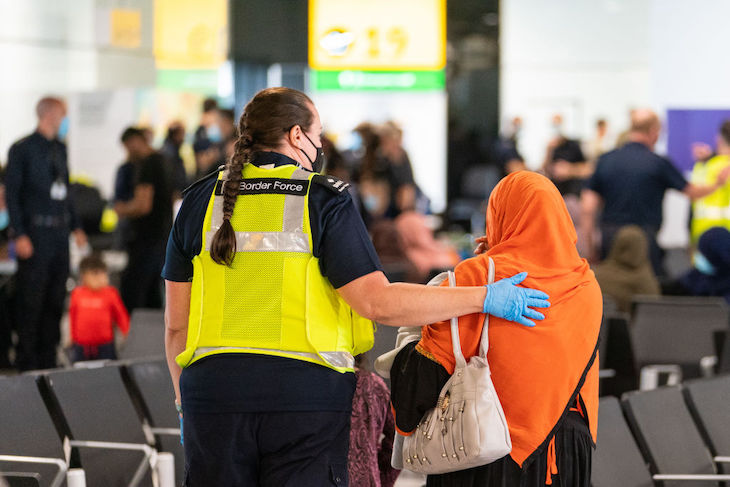This week, we learned that three years ago a Ministry of Defence official accidentally released details of 18,714 Afghans who had applied for relocation to the UK. The Afghans, who had worked with British armed forces, feared retribution from the Taliban, so the Conservative government introduced a new scheme, alongside existing programmes, to resettle some of these people. The Spectator’s leading article this week argues that Britain had a moral responsibility to help them. But how many have arrived so far? And where are they living in Britain?
As of May, 35,245 people had been relocated to the UK through the Afghan resettlement programme made up of several schemes such as the Afghan Relocations and Assistance Policy (ARAP), the Afghan Citizens Resettlement Scheme (ACRS), and the Afghanistan Response Route (ARR). The latter is the recently-revealed scheme for those deemed at risk but not eligible for ARAP or ACRS. Half of those resettled – some 16,156 – were affected by the data leak. All of the schemes were closed to new applicants on 1 July.
ARAP focussed on Afghans who worked with the UK government and classified applicants into four categories. Category one covered UK government employees at immediate risk; category two was for Afghans who mostly worked as translators or cultural advisers; categories three and four covered those considered at lower risk.
ACRS had a slightly wider criteria than ARAP (only 5 per cent of those who applied for ARAP in August 2021 were deemed eligible). It aimed to resettle around 20,000 Afghans – those who helped Britain but did not necessarily work with the armed forces, stood up for democracy or are members of minority religions or groups at risk. Like ARAP it had three categories, or ‘pathways’ which granted indefinite leave to remain, work rights, and eligibility for welfare benefits. Pathway one covered those evacuated during Operation Pitting in 2021; pathway two included referrals by the UNHCR; and pathway three targeted the ‘at-risk individuals’ who supported British efforts. ACRS also covers spouses, partners, and dependent children under the age of 18.
The Afghan resettlement programme also assisted some British nationals (960) and other foreign nationals (120), though the vast majority were Afghans.
Around two-thirds of the 34,308 resettled Afghans live in England, ranging from 5,541 in the south-east to 1,163 in the East Midlands. Scotland has 1,735; Wales, 772; and Northern Ireland, 305. No location data is available for the remaining 7,716.
Among local authorities, Crawley (including Gatwick Airport) hosts the largest group (1,026), followed by Leeds (616), Birmingham (605), and Edinburgh (563). Fifteen local authorities, including Torridge in Devon, South Derbyshire, and the Isles of Scilly, have no resettled Afghans.
Besides the resettlement schemes, many Afghans migrate to the UK for better economic prospects, as the UK’s per capita GDP is 25 times higher than Afghanistan’s. In 2024 alone, more than 5,700 Afghans arrived by small boat across the English Channel, making them the most common nationality using this route. Since 2018, 27,285 Afghans have arrived via small boats or other forms of irregular migration.
As the scandal over the government’s leak and cover-up continues, it’s worth noting that some 5,400 more Afghans who have received invitation letters under ARR will be arriving in the UK over the next few months. The rest will be left in Afghanistan.






Comments